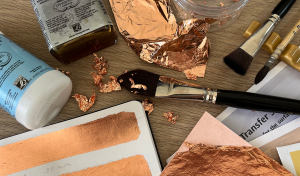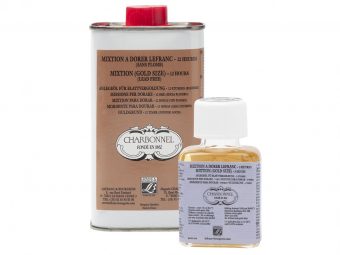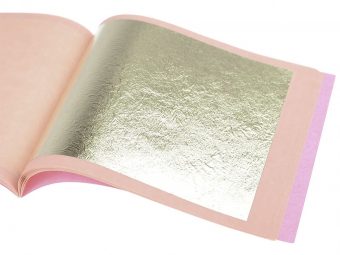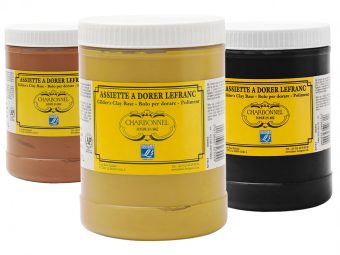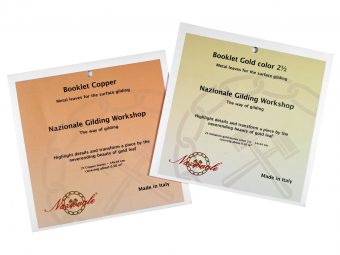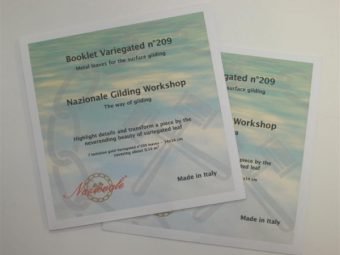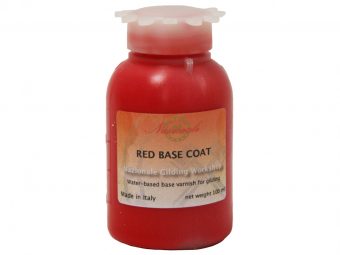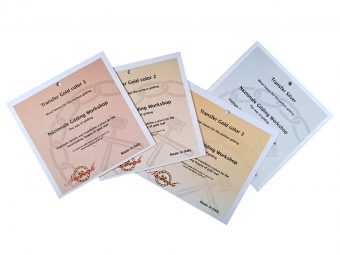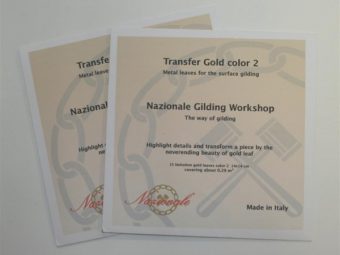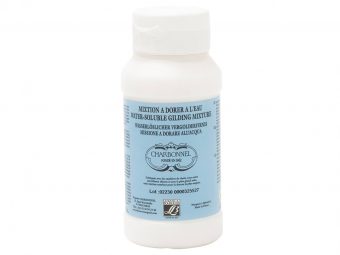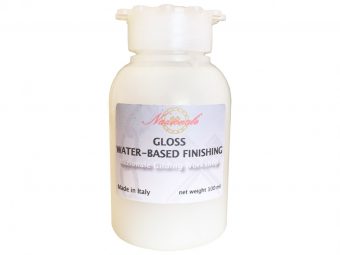Welcome to the enchanting world of gilding, where ordinary objects are transformed into glittering treasures. Whether you are an experienced artist or a beginner, gilding offers a wonderful opportunity to take the elegance and finish of your creations to a whole new level.
What is gilding?
Gilding is the ancient art of applying thin layers of gold leaf or gold dust to various surfaces to create a shiny, metallic finish. For thousands of years, gilding has been used to decorate royal halls, religious artefacts and works of art, captivating admirers with its timeless beauty.
But don’t be intimidated by grand examples and elaborate designs. With practice and a little creativity, you too can master the art of gilding.
Here we explore some of the essential tools you need to get started.
What is a gold leaf?
A gold leaf is an air-thin sheet made from real gold or copper-zinc alloy. It is gently applied to surfaces with gilding glue called ‘size’ to give them a beautiful metallic shine. Gold leaf is available in a variety of colours from gold to bronze to silver. You can choose between genuine gold and imitation gold leaf. You can also choose from gold leaf with varying tones, which are the result of oxidation, to create particularly exciting surfaces. It is good to know that the higher the carat of the leaf, the stronger the tone as well as the thinner and the more delicate the leaf. Imitation gold leaf is inherently thicker and more durable than genuine gold leaf. Regardless of the shade, gilding adds richness to any project.
In addition, the gold leaf is available in two different ways – as loose leaves or with transfer leaves. In the first option, the gold leaves are loose between the interleaves and can be applied to the sized surface using either a brush or tweezers. The gold leaf with transfer leaves is placed on waxed paper, which helps to place the gold leaf on a surface covered with size. To do this, grab the edge of the transfer sheet, place it on the surface to be gilded with the gold leaf side facing down and smooth the wax paper over the sized surface to ensure the gold adheres to the size. Then carefully pull the wax sheet off the surface. The gold leaf that has not touched the size will remain attached to the wax sheet, after which you can place the gold leaf back in the booklet.
If you are a beginner, it is advisable to try the technique with imitation gold leaf as it is easier to use and more affordable.
Which size to use?
A reliable adhesive (gilding size) is essential for fixing the gilding sheet to the chosen surface. Whether it’s a water-based gilding size for intricate designs or an oil-based mix for larger surfaces, choosing the right gilding size will ensure a durable and flawless finish. But what’s the difference between water-based and oil-based gilding sizes, and when to use each?
Water-based gilding sizes are mostly used on moderately porous surfaces indoors, including paper, plaster, wood, etc. Charbonnel Water-Based Gold Size is made from acrylic and vinyl resin and is a cloudy size that dries clear. Water-based gold size has a shorter drying time than oil-based sizes, being ready for use 15-45 minutes after application.
Oil-based gilding sizes are mostly used outdoors but are also suitable for gilding larger surfaces indoors. Oil-based sizes are always labelled with a time (3 hours, 12 hours), which indicates the minimum waiting time between application and gilding.
To ensure an even and beautifully gilded surface, apply the size in a thin and even layer. The smoother the surface, the less size is needed for gilding. Too thick a layer of size can leave wrinkles, cracks or bubbles on the gilding sheet.
Allow the size to dry for as long as indicated on the can. Then test with the back of your hand to see if the size is ready to use. It should be slightly tacky but not wet. Also, try different waiting times on test material to see which result suits you best. If the gold leaf is applied too quickly, it may remain dull and lose its shine. If you wait too long, however, the leaf may no longer stick to the size.
Which brush to use?
In gilding, the right brush is almost as important as choosing the right size. A brush is useful for applying the gilding size, placing the gold leaf, removing excess gold dust and smoothing and flattening the leaf.
Be sure to use a brush with soft and fine hairs. A brush with squirrel or sable hairs is a very good choice in this case. A soft brush will ensure a thin and even application of the size on the gilding surface as well as a delicate handling of the gold leaf itself.
Be sure to use different brushes for applying the size and handling the gold leaf. The size brush should be cleaned immediately after application either with water for water-based size or turpentine for oil-based size.
Tip: When working with oil-based size, dip the brush in turpentine before using the size. This will keep the brush in good working order for longer and will also make it easier to clean.
Should you varnish?
To ensure the durability of the gilded surface and a beautiful shine, it is recommended to varnish the gilded surface. It also stops the oxidation of the gilded surface.
Genuine gold leaf (22 carats and above) does not fade over time and does not require a coat of varnish. Imitation gold leaf should be coated with varnish.
What is a gilder’s base?
A gilder’s base (primer) is not necessary for every gilding job, but it can still help you create the desired result. The main function of the gilding primer is to even out the tone of the surface and slightly influence the final result. Gilding bases are available in a variety of shades and each has a specific function. The most widely used is the red gilding clay base, which gives the gold leaf a beautiful warm undertone and brings out its special shine. The yellow or ochre shade is mostly used to even out the tone of the gilding surface. If for some reason the gilded surface does not come out even, the ocher shade that comes through from the bottom, which is the closest to the gold’s own colour, helps to hide any imperfections. Black gold-plating clay base is most commonly used on silver, platinum or aluminium leaf, giving a particularly bright and clean metallic result.
Once you have all the tools you need, you are ready to start exploring this exciting technique. Whether you’re decorating picture frames, and furniture or adding a touch of luxury to your everyday objects, the possibilities for gilding are as limitless as your imagination.

